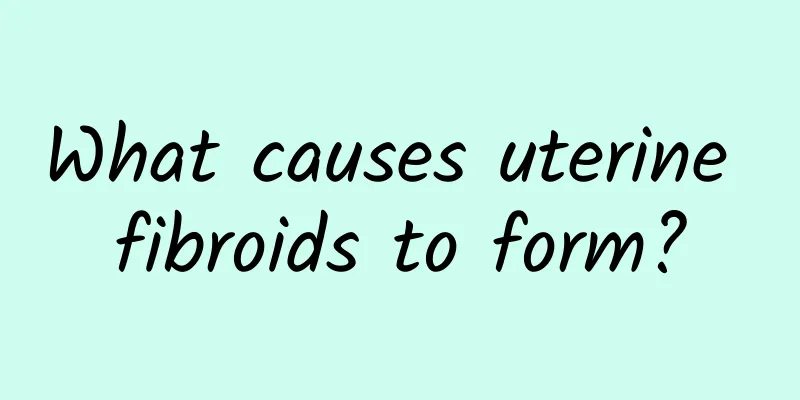What causes uterine fibroids to form?

|
What causes uterine fibroids to form? Uterine fibroids are a common gynecological disease caused by the abnormal proliferation of smooth muscle cells in the uterine wall. So, what causes fibroids to form in the uterus? Let's explore it together. One of the reasons for the formation of uterine fibroids is the change in hormone levels. Estrogen and progesterone are the main sex hormones in women, and they play an important regulatory role in the female reproductive process. However, when the balance of these hormone levels is disturbed, it will lead to the formation of uterine fibroids. For example, during menopause, the estrogen level in women's bodies will change significantly, which is also a stage when uterine fibroids are more likely to occur. Genetic factors are also one of the important reasons that affect the formation of uterine fibroids. Studies have shown that if a woman's close relatives have suffered from uterine fibroids, she may also be affected by genetics and increase the risk of the disease. Uterine fibroids caused by genetic factors are also more likely to appear at a young age and are characterized by multiple and recurrent occurrences. Third, lifestyle and environmental factors are also related to the formation of uterine fibroids. Poor eating habits, obesity, lack of exercise and long-term exposure to stressful environments may increase the risk of the disease. Long-term use of contraceptives containing hormones or hormone replacement therapy can also have a certain impact on the formation of uterine fibroids. The main reasons for the formation of uterine fibroids include changes in hormone levels, genetic factors, and lifestyle and environmental factors. Although uterine fibroids are a common gynecological disease, they do not necessarily cause obvious symptoms or complications. However, for some patients with more serious conditions, fibroids may cause symptoms such as menstrual disorders, abdominal pain, pelvic abdominal mass, and even infertility. Therefore, when early symptoms of uterine fibroids are discovered, patients should seek medical attention in a timely manner and receive professional treatment and management. Uterine fibroids are a common gynecological tumor. Their formation is closely related to changes in hormone levels, genetic factors, lifestyle habits and environmental factors. Although most uterine fibroids are benign tumors and do not pose a threat to the patient's life, they still require timely treatment and management. For women with uterine fibroids, maintaining good eating habits, exercising actively, regulating emotions and stress, and avoiding the use of hormone-containing drugs are important methods for preventing and managing uterine fibroids. At the same time, regular physical examinations and good communication with doctors are also key, because only through early detection and timely treatment can the occurrence of complications be effectively prevented and women's health be protected. |
Recommend
What is hyperprolactinemia?
What is hyperprolactinemia? Hyperprolactinemia is...
What should women pay attention to after having an abortion?
After a woman has an abortion, her body needs som...
Vulvar leukoplakia can become cancerous
Grandma Jia is 61 years old. Since more than 40 y...
Don't forget to lose weight with these 5 fruits that are high in fiber and low in sugar to help your metabolism
Fruit has always been a good friend of people who...
What is the normal thickness of the endometrium?
Endometrial thickness is a key physiological indi...
What should pregnant women do if they have uterine fibroids? How should pregnant women treat uterine fibroids?
Uterine fibroids are not a serious disease, but s...
Is there any harm in having an abortion? Can a painless abortion be done on the same day?
Is there any harm in having an abortion? Can a pa...
Do gynecological diseases affect menstruation?
Gynecological diseases are common problems of the...
What should I do if I haven’t had my period for a long time?
What should I do if I haven’t had my period for a...
Poor cardiopulmonary function may increase the risk of dementia! AI fitness magic mirror detection tool, 4 ways to strengthen the heart and lungs to improve cardiopulmonary endurance
Young people are not necessarily physically stron...
Symptoms of bacterial vaginosis in women
Vaginitis refers to an inflammation of the female...
At what age do women enter menopause?
With the development of the times, the menopause ...
What are the causes of pelvic inflammatory disease?
What are the causes of pelvic inflammatory diseas...
The benefits of exercise for vaginal candidiasis
Women with candidal vaginitis can effectively rel...
The symptoms of cervical erosion disease need to be thoroughly understood
Everyone should be aware that the morbidity can b...









